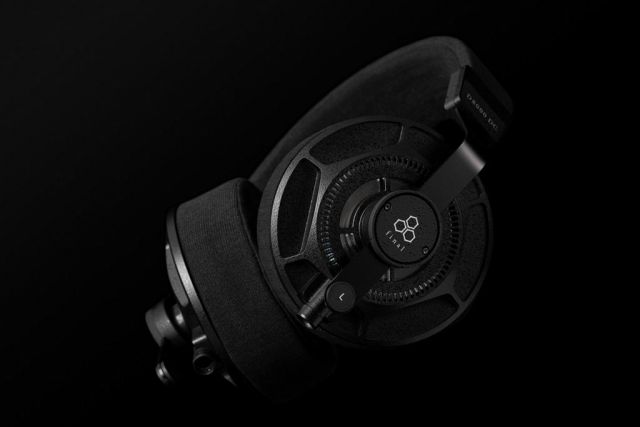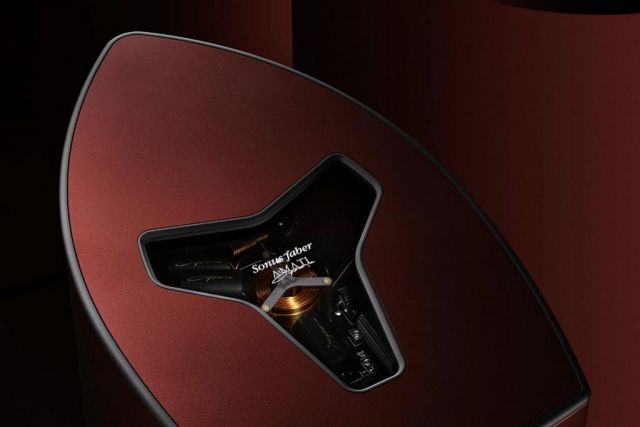
- Reviews
- Posted
Sennheiser HD 630VB
Sennheiser's world of headphones is actually 70 years of chasing the white rabbit. The story of headsets bearing this logo - the name of the brand's founder - started for good in 1968, when the world's first open-back headphones, HD 414, revolutionized the market. By the end of 1969, over a hundred thousand pairs of them were sold, and more than ten million unto this day. The introduction of unipolar electrostatic headphones in 1977 was the next milestone for the German engineers. I am speaking about the 2000 model, which in some ways was the ancestor of one of the best headsets in the world - the Orpheus HE 90/HEV 90 electrostatic headphones, presented in 1991. As regards the equipment for home and personal use, the company has focused on designer Momentum series and lifestyle Urbanite headphones, introducing new wireless and in-ear products from time to time.
Sennheiser's audiophile headsets are primarily the iconic HD 600 and their improved version - HD 650, as well as HD 700 and HD 800, released later and holding honourable position of flagship model. They all have one thing in common, which historically leads us to the HD 414 model - they are open-back, only. Perhaps after successful experiments with Urbanite and Momentum series, someone in the company thought - wait, actually why don't we offer strictly closed-back, audiophile headphones? Why do we deprive people looking for high-quality audio of the separation from the outside world? And the second problem - why couldn't they take their closed headphones for a trip, or to work? This is the way I imagine the birth of HD 630VB. This is the first closed-back audiophile model in Sennheiser's history, designed to offer a very high sound quality, and equipped with a knob for adjusting the amount of bass. Interesting?

Design and functionality
We received the headphones in a hard, cardboard box where traditionally a big, tough, zipped case was placed. Here the case is much bigger than in other models and it seems to be even more resistant to unpleasant surprises. We store headphones in folded position - end of the headband folds inside at an angle. Nevertheless, the whole set is quite large and its transportation requires a backpack rather than a slim suitcase. However, if we want to carry them without the protective cover, the earpads can be folded flat. Furthermore, the case is ideal for storing headphones even at home, so we don't need any headphone stand or other accessories.
Despite manufacturer's assurances of mobility, these headphones are quite a helmet. HD 630VB are large and relatively heavy, but they are also fiendishly well made. Almost all components are metal, including massive ends of headband and hinges. What's more, during the first fitting it turned out that they are very comfortable and effectively suppress surrounding sounds, by which they won my favor.
HD 630VB has another ace up its sleeve. It is the functionality, broadly defined. They have one strong and thick wire, entering the right earpad. We won't find the remote control with three buttons there, but only a small, plastic bulge, which turned out to be a microphone. The choice of hardware platform (iOS or Android) is done by using a small switch, located next to the entrance of the cable to the earpad. The control is performed by the buttons on the cover of right earpad. I really liked them - when we raise our right hand to the ear, index and middle fingers are automatically ready to turn the volume up or down. And there is another gadget here - external knob for adjusting the quantity of low frequencies. The rotary controller is covered with tiny grooves, thanks to which it looks a bit like the platter of a DJ turntable. Anyway, if we want to increase or decrease the amount of bass, we can do it with one simple move.
When the German company announced the launch of HD 630VB, audiophile community was divided into two groups. Some felt that Sennheiser was unnecessarily trying to create some experimental hybrid of HD 600 and Urbanite XL. By contrast, supporters of this idea concluded that it looks very interesting, and HD 630VB can become one the most universal construction in recent years. If, of course, their sound proves to be good enough. I couldn't form an opinion based on photographs, but after a brief contact with these headphones I join the second group. I like not only the concept of audiophile, closed-back headphones, but the general simplicity and workmanship of this model. Some argue that HD 630VB are simply ugly. I can't be the judge here - their design doesn't impress, nor dazzle me. But I like objects that look as if they are able to survive fifty years, and these headphones belong to such group. Or at least they make such an impression.

Sound performance
Sennheiser's headphones haven't disappointed me for a long time. This company doesn't make big mistakes, so I don't recall them failing in some serious or spectacular way. But some years ago a few models were slightly weaker, or simply not as good as those which have already become iconic. Meanwhile, since the launch of flagship HD 800 I didn't come across Sennheiser's headphones which I would rate at four stars instead of five. I don't know whether something specific happened in Wedemark then, but from this moment on Sennheiser's engineers didn't have worse days. So what do you think - how HD 630VB performed in a listening test? Yep, that's right. Almost faultless.
After a few minutes of listening I knew that HD 630VB are undoubtedly good headphones in terms of dynamics, neutrality of sound temperature and adequate clarity. How good - I'd have to check it more carefully. However I began thinking more about the tonal balance. I quickly realized that mids and highs are glued together perfectly, but what about the bass? How should I rate this when all it depends on the position of the knob on the right ear pad? After an extended listening I realized that the manufacturer had made the wisest possible choices here. In the max position, low tones are gently lined, slightly lifted, but they don't hum. Whereas in the minimum position, bass is reminiscent of what good, closed monitors offer - low frequencies don't vanish, but they have less mass and better control. The beauty of of the entire solution lies in the fact that neither of these extremes can be called completely unnatural or non-audiophile. For some recordings, without fear, and even with the benefit of pleasure we can come to the end of scale. We can also choose a position close to the center and then we get perfectly linear sound without coloration, holes or artificial boost over the entire bandwidth. Of course, one may wonder whether such a solution is consistent with the idea of high fidelity. I believe that this is pretty smart compromise between the ability to minor influence on the sound character and modification of the frequency range with each song.
HD 630VB remind me of HD 650 from all the Sennheiser headphones. HD 600 and HD 700 sound brighter and uncompromising, while the HD 800 is in a different league. Moreover, we should remember how the perception of music is changed by the fact that this is a closed-back construction. HD 630VB aren't yet sufficiently effective in suppressing noise to completely separate us from the surroundings. Here we are greatly cut off from noises, but if we listen to music at a normal volume level, we certainly notice the ringing phone or doorbell. How does this affect the sound? Well, no part of the band needs to be emphasized so a variety of details can be heard. As from the putting of HD 630VB on the head we automatically feel more peaceful and we can focus on the sounds coming to us. No boost of the treble is necessary. This leads to another advantage of these headphones which is the ability to provide us comfort during prolonged listening. With all their dynamics and impeccable resolution, HD 630VB aren't tiring. They prefer to show the music in a natural and genuine way, but still enjoyable. It has nothing to do with interference in sound temperature. If anything, it's some kind of smoothness and culture of handling with sounds.
And finally, one of their greatest advantages - the soundstage. In that respect HD 630VB are definitely one of the best closed-back headphones I've listened to for a long time. It's not about the extreme extension, because although the soundstage can surprise us with certain recordings, it's still not as three-dimensional as in some planar headphones. However I really like the freedom of painting the sound, because these headphones don't push the music into the middle of our brain. Here, sounds can even appear outside of our head, so after a while you forget you're sitting in headphones and you feel rather as if you took place between the speakers, very close to them. Furthermore, the soundstage is full of air and separation - everything I need to be delighted.
Disadvantages? Some people can probably complain that we should expect better clarity and lower bass from the headphones at this price. If you want to get a sonic razor blade - I would recommend HD 700. If you like full, fat bass, I would suggest, for example Sony's MDR-Z7. You should be aware though that these headphones are targeted at some areas of the bandwidth, while HD 630VB try to balance all aspects of the sound and they are very good at it. Actually the only thing which bothers me is the cable which is very vulnerable to any scratching noises, so that any contact with clothes for example is immediately audible in the right earpad. At home I don't mind, but if someone really wants to take these headphones for a walk, they should consider this detail.

Build quality and technical parameters
Sennheiser HD 630VB are audiophile, dynamic closed, circumaural headphones with the bass boost option (+/- 5 dB at 50 Hz). Control functions for smartphone or tablet are placed on the right ear cup. Choice of hardware platform is done by using a small, two-position switch - i (Apple)/G (Galaxy, or Android). Strengthened and quite thick 1.2 m cable is equipped with a microphone, so that HD 630VB can be used as a full-fledged headset for phone calls. The manufacturer doesn't provide information about the transducers, but the size of the pads suggests that they are rather something more serious than 30-mm drivers. Frequency response extends from 10 Hz to 42 kHz. The parameters are rather approachable, so no worries, you can connect even smartphone or tablet to them - 23 Ω impedance and 114 dB sensitivity are no problem even for a relatively weak amplifier. The high quality of the components used to build the HD 630VB is reflected in their weight - headphones without cable weigh exactly 400 grams. As for the classic dynamic headphones, quite a lot.
System configuration
Asus Zenbook UX31A, Marantz HD-DAC1, Naim CD5 XS, OPPO HA-2, T+A E-Serie Power Plant Balanced, iPhone 5S, iPad Air 2, Asus Nexus 7.

Verdict
Another very successful Sennheiser headphones. It's becoming quite boring...
Technical data
Construction: dynamic, closed, circumaural
Frequency response: 10 Hz - 42 kHz
Sensitivity: 114 dB
Impedance: 23 Ω
Total harmonic distortion: <0.08%
Contact pressure: 5.5-6.8 N
Cable length: 1.2 m
Remote: iOS, Android
Weight: 400 g
Price: €499
Manufacturer: Sennheiser
Sound performance
Editor's rating
7.8Overall8Sound7Functionality8Design9Quality7Price




















